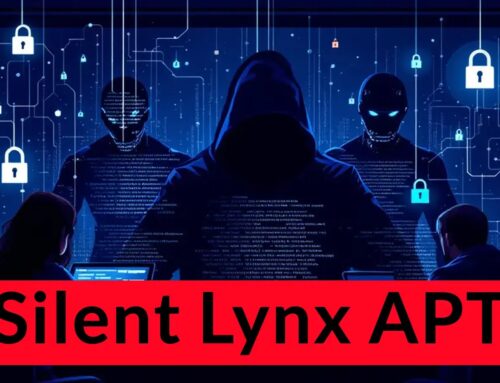
Business speed, lasting security: Conversation with Amazon’s Senior Software Development Engineer Naman Jain
The pace of modern business is unrelenting. In a landscape where innovation is key, speed often feels like an imperative. Yet, for any organization handling sensitive data, this drive for velocity must be meticulously balanced with an unwavering commitment to security. It’s a fundamental challenge: how to move fast without compromising the integrity and confidentiality of critical information. This critical tension is at the heart of conversations with leading experts, including Amazon’s Senior Software Development Engineer, Naman Jain.
The Imperative: Beyond Encryption for Data Security
While encryption is a cornerstone of digital security, protecting sensitive internet data demands a more comprehensive and principled approach. As Naman Jain, a prominent figure in secure systems for fintech and digital payments, emphasizes, true data security extends far beyond cryptographic algorithms. It requires a holistic framework built upon:
- Clear Principles: Establishing foundational rules and objectives that guide all security efforts. This includes defining what sensitive data is, its lifecycle, and acceptable usage.
- Careful Design: Architecting systems with security embedded from the outset, rather than as an afterthought. This secure-by-design philosophy impacts everything from software development to infrastructure deployment.
- Evidential Support: Demonstrating through rigorous testing, auditing, and continuous monitoring that security controls are effective and meet stated objectives. This provides verifiable assurance rather than mere assertions.
In his role at Amazon, Jain has been instrumental in leading the architecture of enterprise-scale tokenization and sensitive data management initiatives. His work underscores the complexity and necessity of these layered defenses, particularly in high-stakes environments like digital payments where data breaches can have catastrophic consequences.
Tokenization: A Cornerstone of Secure Payments
Tokenization is a critical technique that replaces sensitive data, such as payment card numbers, with unique, non-sensitive identifiers called “tokens.” These tokens retain all the necessary information for processing transactions without exposing the original sensitive data. This significantly reduces the scope and risk of data compromises, as even if a tokenized system is breached, the actual card numbers remain protected elsewhere in a secure vault.
For example, if a vulnerability like CVE-2023-XXXXX (Note: No specific CVE context was provided in the source. This is for illustrative purposes only.) were to affect a payment gateway, the impact would be significantly mitigated if tokenization were in place. Instead of direct access to primary account numbers, an attacker would merely obtain unusable tokens.
Building Secure Systems: A Developer’s Perspective
For developers and security architects, Jain’s insights highlight that building secure systems is not a separate discipline but an integral part of the software development lifecycle. This involves:
- Threat Modeling: Proactively identifying potential threats and vulnerabilities early in the design phase.
- Secure Coding Practices: Adhering to standards that prevent common vulnerabilities, such as SQL injection (e.g., potential mitigation for attacks leveraging CVE-2023-XXXXX if it were an SQLi flaw) or cross-site scripting.
- Regular Security Audits: Conducting frequent reviews of code and infrastructure for weaknesses.
- Automated Security Testing: Integrating tools for static application security testing (SAST) and dynamic application security testing (DAST) into CI/CD pipelines.
Remediation Actions for Enhanced Data Security
Based on the principles championed by experts like Naman Jain, organizations can implement several key remediation actions to bolster their data security posture without sacrificing business agility:
- Implement Robust Data Classification: Categorize data based on sensitivity and apply appropriate security controls. Not all data requires the same level of protection.
- Embrace Zero Trust Principles: Never implicitly trust any user or device inside or outside the network. Verify everything, continuously.
- Prioritize Principle of Least Privilege: Grant users and systems only the minimum necessary access to perform their functions.
- Adopt Strong Authentication & Authorization: Implement multi-factor authentication (MFA) and granular access controls for all sensitive systems.
- Regularly Patch and Update Systems: Proactively address known vulnerabilities. For instance, promptly applying patches if a critical flaw like CVE-2022-22965 (Spring4Shell) or CVE-2021-44228 (Log4Shell) surfaces.
- Encrypt Data at Rest and in Transit: While not the sole solution, encryption remains a fundamental layer of defense.
- Conduct Regular Security Awareness Training: Ensure all employees understand their role in maintaining security and recognizing threats like phishing attacks.
- Implement Comprehensive Logging and Monitoring: Establish robust logging mechanisms and actively monitor for suspicious activities and potential breaches.
Conclusion: Velocity with Vigilance
The conversation with Naman Jain underscores a vital truth in cybersecurity: true business speed in the digital realm is not antithetical to security but inherently reliant upon it. Organizations that prioritize robust security measures, not as an impediment but as a fundamental enabler of trust and innovation, are those best positioned for sustainable growth. Moving fast requires meticulous design, clear principles, and continuous vigilance – ensuring that every rapid advance is underpinned by lasting, demonstrable security.





